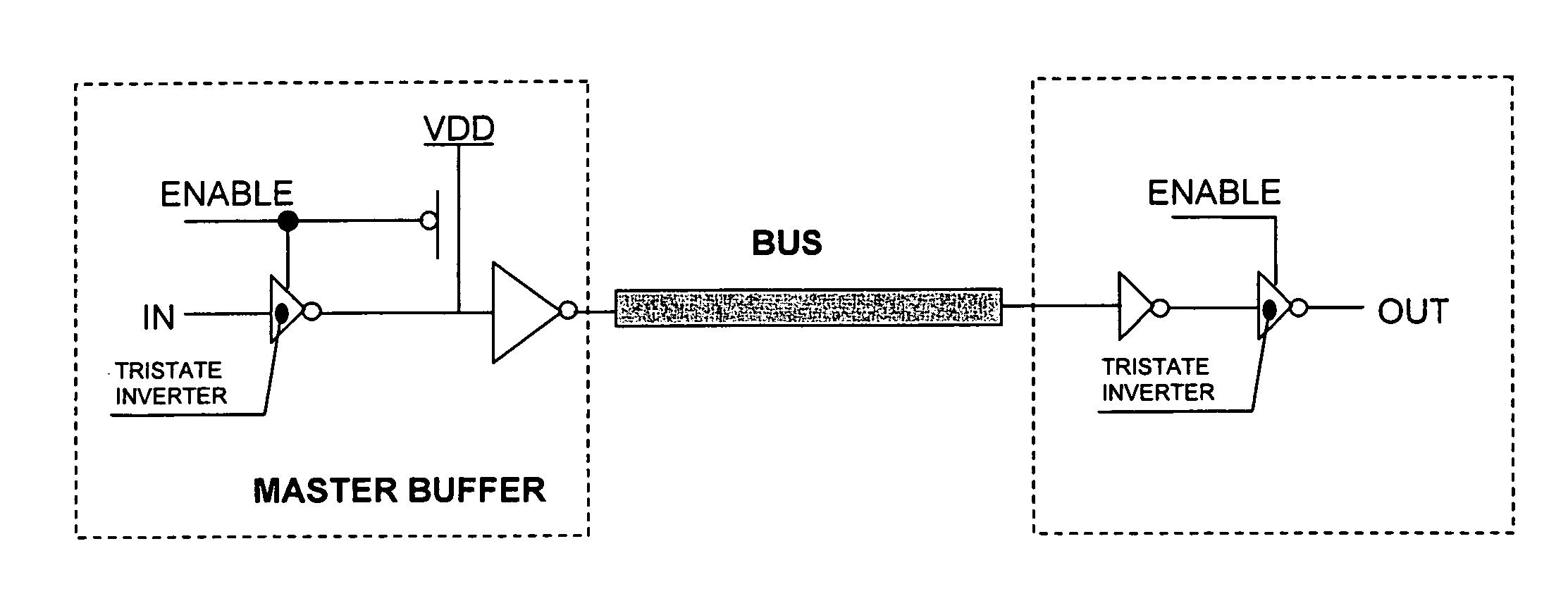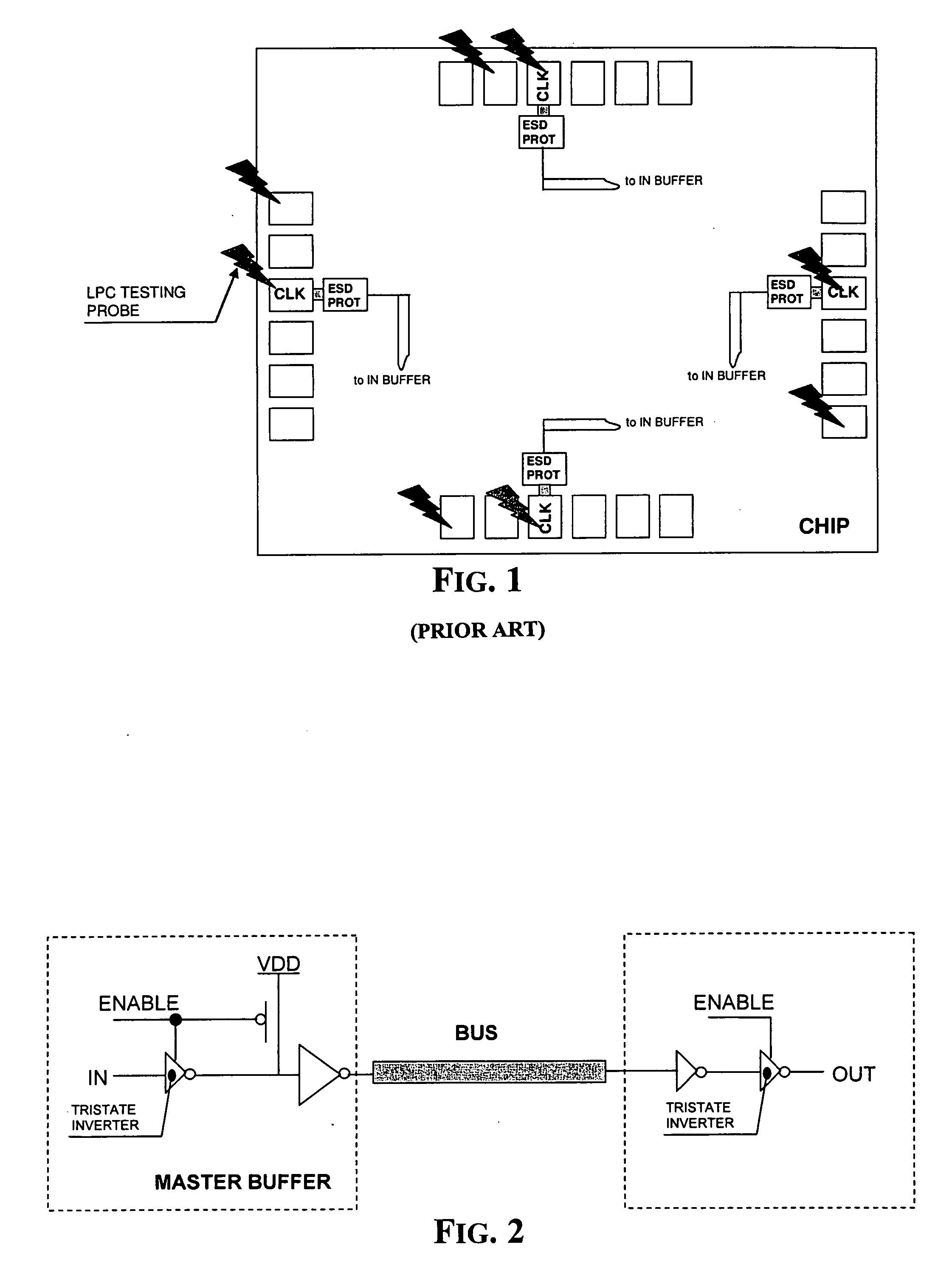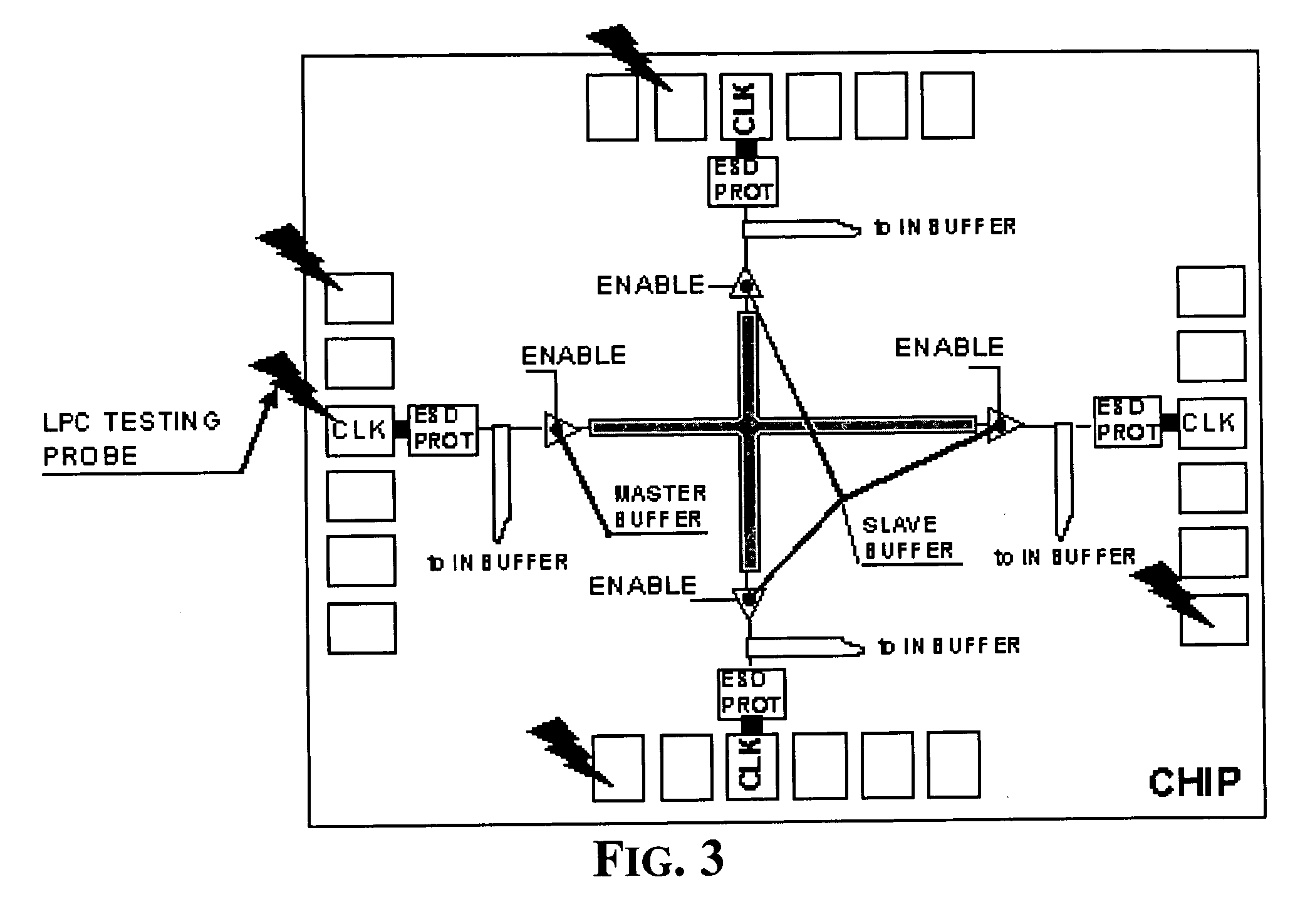Circuit for distributing a test signal applied to a pad of an electronic device
- Summary
- Abstract
- Description
- Claims
- Application Information
AI Technical Summary
Benefits of technology
Problems solved by technology
Method used
Image
Examples
Embodiment Construction
[0017] A test signal distribution circuit of this invention is shown in FIG. 2. It includes a “master” buffer and of one or more “slave” buffers connected to the “master” buffer via an interconnection bus. A test signal is fed on an input IN of the “master” buffer by applying it to a pad contacted by the tip of a probe during a test on wafer phase, and the master buffer transfers it on the interconnection bus when the master buffer is enabled by the enabling signal ENABLE.
[0018] The distribution circuit has as many “slave” buffers as the replicated pads of the “first” pad. Each of these “slave” buffers, enabled by the same signal ENABLE, makes the signal present on the interconnection bus available at the output OUT. The signal distribution circuit of this invention is connected to the pads of the device to be tested such that the input of the “master” buffer is connected to the “first” pad, while the output of each “slave” buffer replicates the signal present on the interconnectio...
PUM
 Login to View More
Login to View More Abstract
Description
Claims
Application Information
 Login to View More
Login to View More - R&D
- Intellectual Property
- Life Sciences
- Materials
- Tech Scout
- Unparalleled Data Quality
- Higher Quality Content
- 60% Fewer Hallucinations
Browse by: Latest US Patents, China's latest patents, Technical Efficacy Thesaurus, Application Domain, Technology Topic, Popular Technical Reports.
© 2025 PatSnap. All rights reserved.Legal|Privacy policy|Modern Slavery Act Transparency Statement|Sitemap|About US| Contact US: help@patsnap.com



